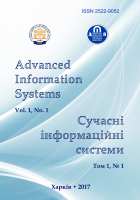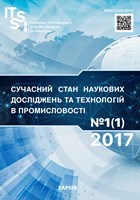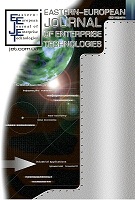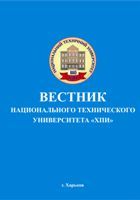
Бази даних
Наукова періодика України - результати пошуку
 |
Для швидкої роботи та реалізації всіх функціональних можливостей пошукової системи використовуйте браузер "Mozilla Firefox" |
|
|
Повнотекстовий пошук
| Знайдено в інших БД: | Книжкові видання та компакт-диски (1) | Реферативна база даних (2) |
Список видань за алфавітом назв: Авторський покажчик Покажчик назв публікацій  |
Пошуковий запит: (<.>A=Akhiiezer O$<.>) | |||
|
Загальна кількість знайдених документів : 5 Представлено документи з 1 до 5 |
|||
| 1. | 
Akhiiezer O. Machine learning methods application for solving the problem of biological data analysis [Електронний ресурс] / O. Akhiiezer, O. Dunaievska, I. Serdiuk, S. Spivak // Сучасні інформаційні системи. - 2018. - Т. 2, № 3. - С. 5-9. - Режим доступу: http://nbuv.gov.ua/UJRN/adinsys_2018_2_3_3 | ||
| 2. | 
Akhiiezer O. Use of triangular models of non-stationary processes in modeling variability of heart rhythm [Електронний ресурс] / O. Akhiiezer, O. Dunaievska, M. Shyshkin, O. Butova, A. Rohovyi // Сучасний стан наукових досліджень та технологій в промисловості. - 2019. - № 1. - С. 5-15. - Режим доступу: http://nbuv.gov.ua/UJRN/dtssi_2019_1_3 | ||
| 3. | 
Yevseiev S. Development of a method for ensuring confidentiality and authenticity in wireless channels [Електронний ресурс] / S. Yevseiev, R. Korolev, M. Koval, K. Rzayev, O. Voitko, O. Akhiiezer, A. Hrebeniuk, S. Milevskyi, E. Baghirov, M. Mammadov // Eastern-European journal of enterprise technologies. - 2022. - № 6(9). - С. 15–27. - Режим доступу: http://nbuv.gov.ua/UJRN/Vejpte_2022_6(9)__4 The necessity of studying the influence of the transformation of the frequency mismatch function of a coherent bundle of radio pulses on the quality of solving the radar frequency resolution problem is substantiated. This solution determines the effectiveness of radar observation of high-speed and maneuvering individual and group aerodynamic objects. The method is based on explicit expressions for calculating the normalized frequency mismatch function of a coherent bundle of radio pulses, taking into account its transformation due to the radial motion of high-speed and maneuvering individual and group aerodynamic objects. The estimation of the potential frequency resolution of bundles with different numbers of radio pulses with typical parameters for a coherent pulse radar is carried out. Possible values of frequency resolution under the additive effect of uncorrelated internal noise of the radar receiver and the multiplicative effect of correlated phase fluctuations of the radar signal are estimated. With an insignificant multiplicative effect of correlated phase fluctuations, a twofold increase in the number of radio pulses in a bundle provides an improvement in the frequency resolution (reduction of the width of the normalized frequency mismatch function) by 100 %. With the predominant multiplicative effect of these fluctuations, a twofold increase in the number of radio pulses results in an improvement in the frequency resolution by about 40 %. The developed method is of great theoretical and practical importance for the further development of the radar theory of high-speed and maneuvering individual and group aerodynamic objects.The paper presents the results of the development of a method for assessing the security of cyber-physical systems based on the Lotka - Volterra model. Security models of cyber-physical systems are proposed: "predator-prey" taking into account the computing capabilities and focus of targeted cyberattacks, "predator-prey" taking into account the possible competition of attackers in relation to the "prey", "predator-prey" taking into account the relationships between "prey species" and "predator species", "predator-prey" taking into account the relationship between "prey species" and "predator species". Based on the proposed approach, the coefficients of the Lotka - Volterra model <$E alpha~=~0,39>, <$E beta~=~0,32>, <$E gamma~=~0,29>, <$E phi~=~0,27> were obtained, which take into account the synergy and hybridity of modern threats, funding for the formation and improvement of the protection system, and also allow determining the financial and computing capabilities of the attacker based on the identified threats. The proposed method for assessing the security of cyber-physical systems is based on the developed threat classifier, allows assessing the current security level and provides recommendations regarding the allocation of limited protection resources based on an expert assessment of known threats. This approach allows offline dynamic simulation, which makes it possible to timely determine attackers' capabilities and form preventive protection measures based on threat analysis. In the simulation, actual bases for assessing real threats and incidents in cyber-physical systems can be used, which allows an expert assessment of their impact on both individual security services and security components (cyber security, information security and security of information). The presented simulation results do not contradict the graphical results of the classical Lotka - Volterra model, which indicates the adequacy of the proposed approach for assessing the security of cyber-physical systems.The development of the social aspect of the world community is closely related to the expansion of the range of digital services in cyberspace. A special place in which social networks occupy. The world's leading states are conducting information operations in this environment to achieve geopolitical goals. Such processes are reflected in real social and political life. This makes it possible to influence not only the social groups of society, but also to ensure manipulation in political "games" in the conduct of hybrid wars. The simultaneous interaction of social factors, influencing factors, the presence of communities in social networks forms a full-fledged sociocyber-physical system capable of integrating real and virtual interactions to manage regional communities. The article proposes a method for predicting the assessment of social mutual influence between "formal" and "informal" leaders and regional societies. The proposed models make it possible to form not only a forecast of the influence of agents, but also the interaction of various agents, taking into account their formal and informal influences, the use of administrative resources, political moods of the regional society. This approach allows dynamic modeling based on impact and relationship analysis. The presented results of simulation modeling do not contradict the results of opinion polls and make it possible to form a set of measures that can be aimed at overcoming the negative impact on the regional society of both individual "leaders" and political parties. Analysis of the simulation results allows to increase both the political and social stability of the regional society, helps to prevent conflict moods and contradictions. | ||
| 4. | 
Akhiiezer O. B. Failure rate regression model building from aggregated data using kernel-based machine learning methods [Електронний ресурс] / O. B. Akhiiezer, G. L. Grinberg, L. M. Lyubchyk, K. S. Yamkovyi // Вісник Національного технічного університету "ХПІ". Серія : Системний аналіз, управління та інформаційні технології. - 2022. - № 2. - С. 51-56. - Режим доступу: http://nbuv.gov.ua/UJRN/vcpisa_2022_2_10 | ||
| 5. | 
Akhiiezer O. Strategic brand portfolio management [Електронний ресурс] / O. Akhiiezer, H. Holotaistrova, Y. Gomozov, V. Mats, A. Rogovyi // Вісник Національного технічного університету "ХПІ". Серія : Стратегічне управління, управління портфелями, програмами та проектами. - 2022. - № 2. - С. 3-6. - Режим доступу: http://nbuv.gov.ua/UJRN/vntux_ctr_2022_2_3 | ||
 |
| Відділ наукової організації електронних інформаційних ресурсів |
 Пам`ятка користувача Пам`ятка користувача |